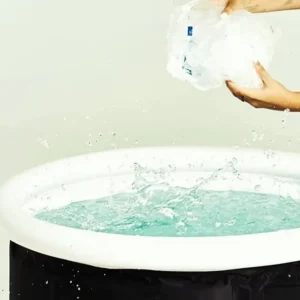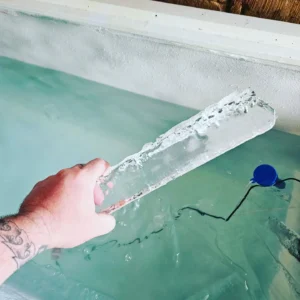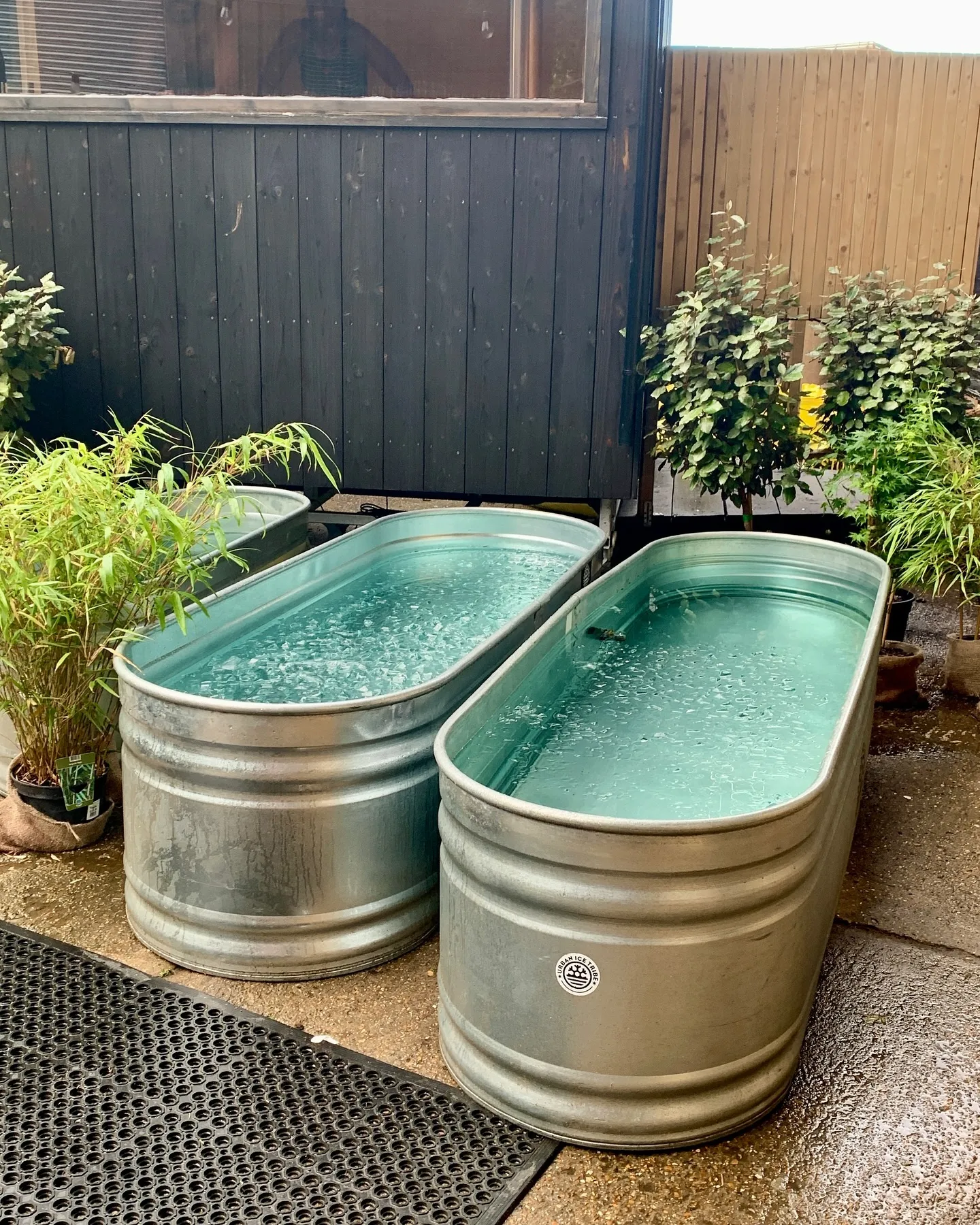When it comes to recovery techniques for athletes and fitness enthusiasts, few methods have gained as much attention and debate as ice baths. Whether you’re a seasoned marathon runner, an intense weightlifter, or just someone trying to recover from a tough workout, ice bath recovery has become a go-to practice for muscle relief and inflammation control. But what exactly are ice baths, how do they work, and are they really as effective as they’re made out to be?
Let’s dive into the world of ice bath recovery and explore everything you need to know!
What is an Ice Bath?


An ice bath, also known as cold-water immersion, is a recovery technique where an individual immerses their body, typically from the waist down or entirely, into ice-cold water (usually between 10°C and 15°C or 50°F to 59°F) for a specific amount of time, usually between 10 to 20 minutes. The goal is to reduce inflammation, alleviate soreness, and speed up muscle recovery after intense physical exertion.
While it may sound uncomfortable (or downright excruciating!), many athletes swear by its benefits, and the practice is commonly used in sports like football, running, and rugby, as well as by bodybuilders, CrossFitters, and even non-athletes looking for relief from muscle fatigue.
How Does Ice Bath Recovery Work?


The principle behind ice baths lies in the body’s response to cold exposure. Here’s what happens when you take an ice bath:
- Vasoconstriction (Narrowing of Blood Vessels):
The cold temperatures cause your blood vessels to constrict, which reduces blood flow to your muscles and tissues. This helps limit the amount of metabolic waste, such as lactic acid, that builds up in your muscles during intense exercise.
- Reduced Inflammation:
Cold water immersion helps reduce the inflammation and swelling that often occurs after strenuous physical activity. The constriction of blood vessels followed by the dilation (widening) that occurs when you leave the ice bath increases the flow of fresh, oxygenated blood to your muscles, helping them recover faster.
- Pain Relief:
The numbing effect of cold water can help dull the pain from sore muscles or injury, offering temporary relief. This is why ice baths are often used by athletes immediately after intense games or training sessions to reduce muscle soreness.
- Decreased Muscle Damage:
By reducing inflammation, ice baths help mitigate the muscle damage that occurs during exercise, which can help you recover more quickly and get back to your training routine.
Benefits of Ice Bath Recovery


Many athletes and fitness buffs swear by ice baths, citing several benefits that help improve performance and recovery. Here are some of the main advantages:
1. Reduces Muscle Soreness (DOMS)
Ice baths are often used to reduce delayed onset muscle soreness (DOMS) after intense workouts. The cold exposure helps decrease inflammation and flush out metabolic waste, making it easier to recover from muscle soreness.
2. Speeds Up Recovery
By reducing swelling and increasing blood flow once you’re out of the bath, ice baths help speed up the recovery process. This is especially important for athletes who need to train frequently or compete in back-to-back events.
3. Prevents Overtraining
Ice baths can be an effective tool in preventing overtraining syndrome by aiding recovery and preventing injuries caused by muscle fatigue and inflammation.
4. Improves Circulation
The constriction and dilation of blood vessels caused by cold exposure helps improve overall circulation. This may support quicker delivery of oxygen and nutrients to tissues, helping with muscle repair.
5. Mental Resilience
For many, sitting in a freezing cold bath is a mental challenge. Overcoming the discomfort and enduring the ice bath can improve mental toughness, which is valuable both in sports and daily life.
Potential Risks and Considerations


While ice baths have many potential benefits, they also come with some risks and considerations, especially if done improperly or too frequently. Here are some things to keep in mind:
- Shock to the System
For some people, especially those with heart conditions or poor circulation, immersing the body in cold water may be dangerous. It can lead to shock or cause the body’s heart rate to increase, potentially leading to other issues.
- Too Much Cold Exposure
Prolonged exposure to ice-cold water can have adverse effects, including tissue damage, hypothermia, or frostbite. It’s crucial to follow guidelines for how long to stay in the bath (usually around 10-20 minutes) and avoid excessive exposure.
- Can Slow Down Muscle Growth
Some studies have suggested that cold immersion may impair muscle growth by blunting the body’s inflammatory response, which is necessary for muscle repair. Therefore, ice baths may not be ideal immediately after every workout, especially if your goal is to build muscle.
- Not Suitable for Everyone
People with certain health conditions, such as Raynaud’s disease or cold hypersensitivity, should avoid ice baths due to the risk of further damage to their blood vessels or skin.
Best Practices for Taking an Ice Bath

If you’re interested in trying an ice bath for recovery, here are some tips to get the most out of the experience:
- Prepare the Water:
Fill a tub with cold water and add ice. Aim for a temperature between 10°C and 15°C (50°F to 59°F). The water should be cold but not painfully unbearable.
- Set a Timer:
Stay in the ice bath for 10 to 20 minutes—longer than that may lead to negative effects such as numbness or discomfort.
- Stay Calm:
Getting into an ice bath can be shocking at first, but try to stay calm and breathe deeply. Focus on controlling your breathing and staying as relaxed as possible.
- Warm Up Gradually:
After exiting the ice bath, warm up your body gradually. Avoid jumping into a hot shower immediately, as this could cause a shock to your system. Instead, let your body warm up slowly and naturally.
- Use Ice Baths Strategically:
You don’t need to take an ice bath after every workout. It’s best to reserve this technique for days when you’ve done particularly intense or high-impact exercise.
Conclusion: Is Ice Bath Recovery Worth It?
Ice baths are undoubtedly a powerful recovery tool when used correctly. They help reduce inflammation, relieve muscle soreness, and accelerate recovery, making them ideal for athletes and fitness enthusiasts. However, they’re not a one-size-fits-all solution, and it’s essential to understand your body’s needs before diving into the cold.
If you’re looking to speed up recovery after intense workouts or competitions, ice baths can be a valuable addition to your recovery routine. Just be sure to follow safety guidelines and consult a professional if you have any health concerns.
So, are you ready to embrace the cold and give ice bath recovery a try? The chill might be uncomfortable at first, but the benefits to your body—and your training—could be well worth it!

